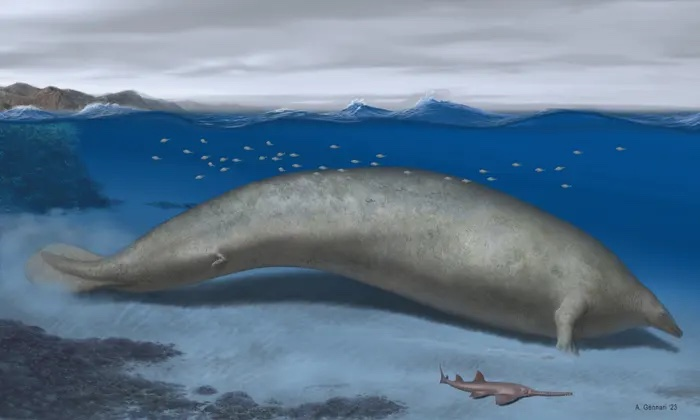A team of paleontologists has announced the discovery of a large marine fossil in the Peruvian desert that appears to have weighed more than the blue whale - the heaviest animal on Earth.

According to Sputnik (Russia), the new animal species has been named Perucetus colossus - the giant Peruvian whale. Researchers at San Marcos University in Lima first discovered the bones of the ancient whale more than 10 years ago. But it took years of excavations for archaeologists to find and fully recover the rest of the fossil from a rock mass in the southern Peruvian desert, which tens of millions of years ago was the bottom of the sea.
“This fossil is very different from anything I have seen before,” said Alberto Collareta, a paleontologist at the University of Pisa who studied the fossil. “It is the heaviest mammal skeleton, possibly the heaviest vertebrate skeleton ever found.”
The researchers collected 13 vertebrae, four ribs and one hip bone from the whale. Each vertebra weighed more than 100 kg and the rib was nearly 1.5 m long. They estimated the fossil to be about 39 million years old.
Paleontologists believe that this giant prehistoric whale weighed between 85 and 340 tons of kilograms. Meanwhile, the largest blue whales on Earth usually weigh around 200 tons. If the actual weight is similar to this estimate, the Peruvian giant whale is the heaviest animal ever discovered.
However, archaeologists believe that this fossil whale was only about 20 meters long, shorter than the blue whale. The blue whale species grows to have a body length of up to 30 meters. The research team also described the giant Peruvian whale as resembling a modern manatee with a very small head, a huge body, and tiny arms and legs.
The blue whale is by far the largest animal on Earth. The giant skeleton of Hope's blue whale is on display at the Natural History Museum in London, measuring more than 25 metres long and weighing 4.5 tonnes.
According to baotintuc.vn
Source link





































































































Comment (0)